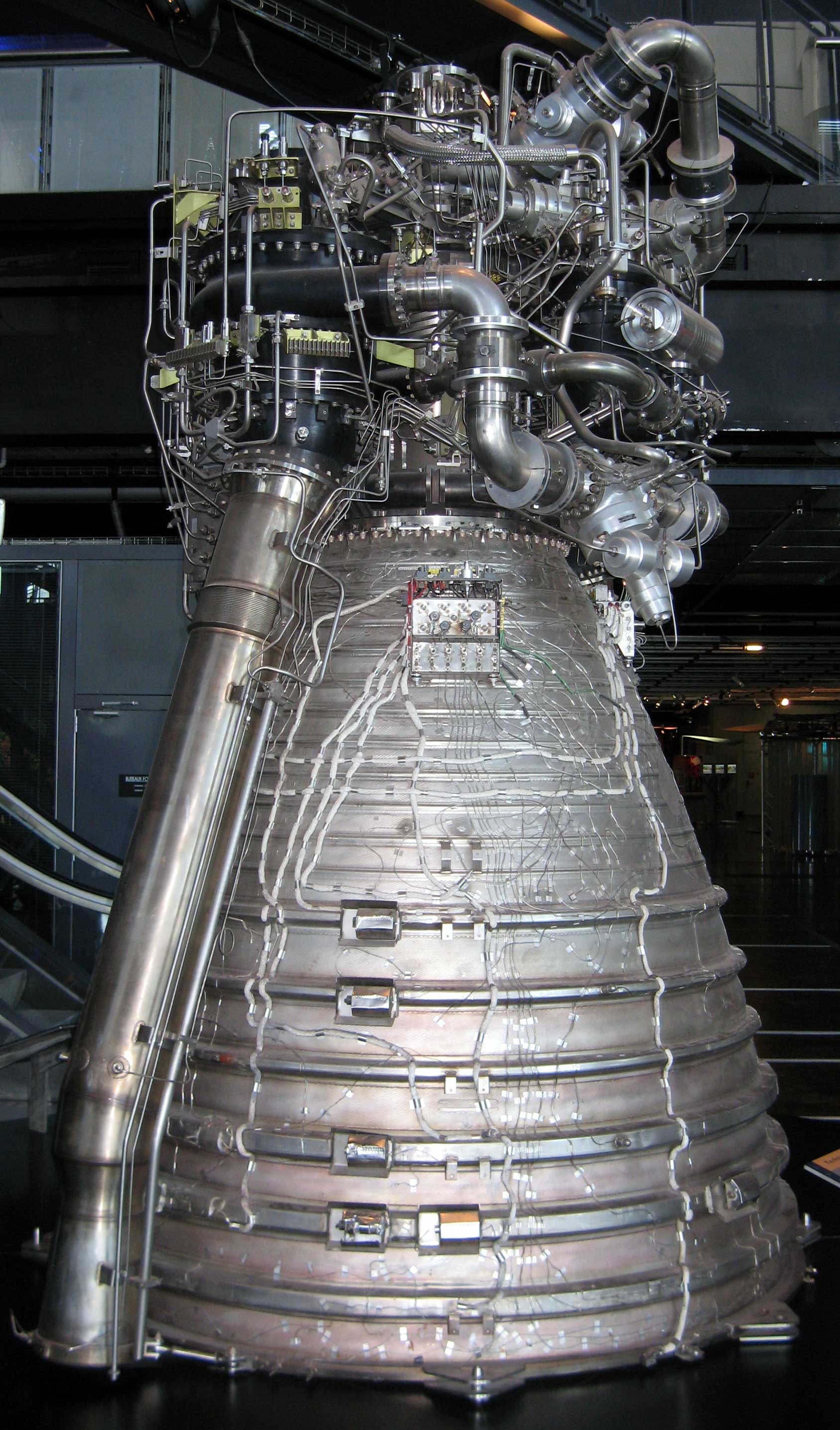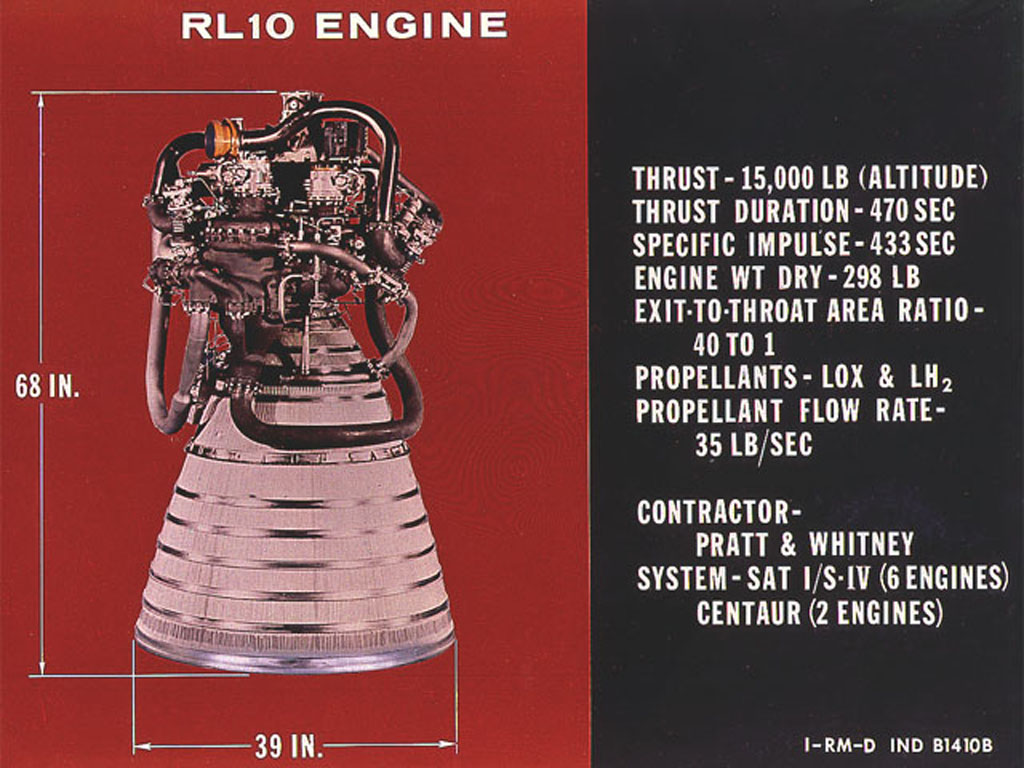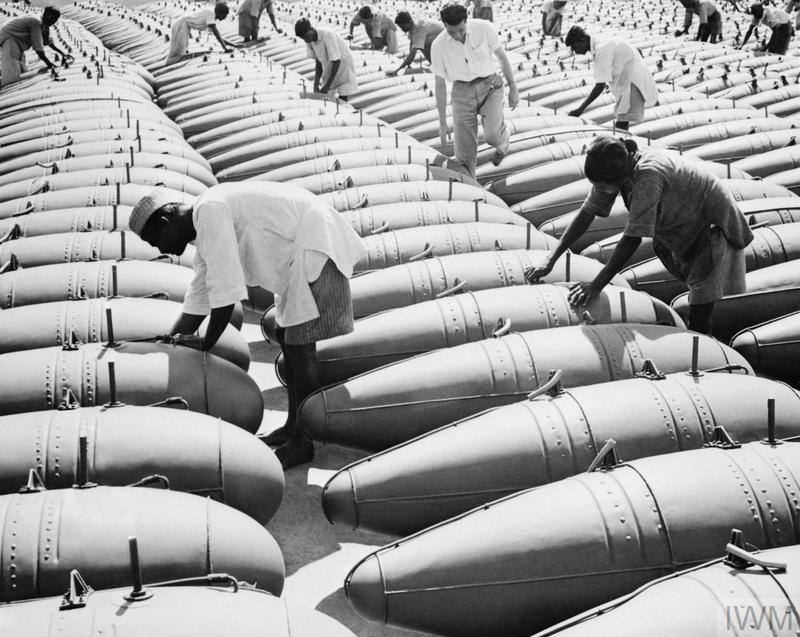|
CE-20
The CE-20 is a cryogenic rocket engine developed by the Liquid Propulsion Systems Centre, a subsidiary of Indian Space Research Organisation. It has been developed to power the upper stage of the LVM 3. It is the first Indian cryogenic engine to feature a gas-generator cycle. The high thrust cryogenic engine is the most powerful upper stage cryogenic engine in the world. Overview The CE-20 is the first Indian cryogenic engine to feature a gas-generator cycle. The engine produces a nominal thrust of 200 kN, but has an operating thrust range between 180 kN to 220 kN and can be set to any fixed values between them. The combustion chamber burns liquid hydrogen and liquid oxygen at 6 MPa with 5.05 engine mixture ratio. The engine has a thrust-to-weight ratio of 34.7 and a specific impulse of in vacuum. Development and Testing * On 28 April 2015, CE-20 cleared a 635 seconds long duration hot test at IPRC, Mahendragiri test facility. This test was preceded by two c ... [...More Info...] [...Related Items...] OR: [Wikipedia] [Google] [Baidu] |
LVM 3
The Launch Vehicle Mark-3 (LVM 3), previously referred to as the Geosynchronous Satellite Launch Vehicle Mark III (GSLV Mk3), is a three-stage medium-lift launch vehicle developed by the Indian Space Research Organisation (ISRO). Primarily designed to launch communication satellites into geostationary orbit, it is also due to launch crewed missions under the Indian Human Spaceflight Programme. GSLV Mk III has a higher payload capacity than it's predecessor, GSLV Mk II. After several delays and a sub-orbital test flight on 18 December 2014, ISRO successfully conducted the first orbital test launch of GSLV Mk III on 5 June 2017 from the Satish Dhawan Space Centre. Total development cost of project was . In June 2018, the Union Cabinet approved to build 10 GSLV Mk III rockets over a five-year period. The GSLV Mk III has launched CARE, India's space capsule recovery experiment module, Chandrayaan-2, India's second lunar mission, and will be used to carry Gaganyaan, the first cre ... [...More Info...] [...Related Items...] OR: [Wikipedia] [Google] [Baidu] |
Indian Space Research Organisation
The Indian Space Research Organisation (ISRO; ) is the national space agency of India, headquartered in Bengaluru. It operates under the Department of Space (DOS) which is directly overseen by the Prime Minister of India, while the Chairman of ISRO acts as the executive of DOS as well. ISRO is India's primary agency for performing tasks related to space-based applications, space exploration and the development of related technologies. It is one of six government space agencies in the world which possess full launch capabilities, deploy cryogenic engines, launch extraterrestrial missions and operate large fleets of artificial satellites. The Indian National Committee for Space Research (INCOSPAR) was established by Jawaharlal Nehru under the Department of Atomic Energy (DAE) in 1962, on the urging of scientist Vikram Sarabhai, recognising the need in space research. INCOSPAR grew and became ISRO in 1969, within DAE. In 1972, the government of India set up a Space Commissi ... [...More Info...] [...Related Items...] OR: [Wikipedia] [Google] [Baidu] |
Gaganyaan
Gaganyaan (Sanskrit IAST: ''gagan-yāna'', ) is an Indian crewed orbital spacecraft intended to be the formative spacecraft of the Indian Human Spaceflight Programme. The spacecraft is being designed to carry three people, and a planned upgraded version will be equipped with rendezvous and docking capability. In its maiden crewed mission, Indian Space Research Organisation (ISRO)'s largely autonomous 5.3 metric tonnes capsule will orbit the Earth at 400 km altitude for up to seven days with a two or three-person crew on board. The first crewed mission was originally planned to be launched on ISRO's LVM 3 in December 2021, but this has since been delayed to no earlier than 2024. This Hindustan Aeronautics Limited (HAL) manufactured crew module had its first un-crewed experimental flight on 18 December 2014. , design of the crew module has been completed. Defence Research and Development Organisation (DRDO) will provide support for critical human-centric systems and techno ... [...More Info...] [...Related Items...] OR: [Wikipedia] [Google] [Baidu] |
Cryogenic Rocket Engine
A cryogenic rocket engine is a rocket engine that uses a cryogenic fuel and oxidizer; that is, both its fuel and oxidizer are gases which have been liquefied and are stored at very low temperatures. These highly efficient engines were first flown on the US Atlas-Centaur and were one of the main factors of NASA's success in reaching the Moon by the Saturn V rocket. Rocket engines burning cryogenic propellants remain in use today on high performance upper stages and boosters. Upper stages are numerous. Boosters include ESA's Ariane 5, JAXA's H-II, and the United States Delta IV and Space Launch System. The United States, Russia, Japan, India, France and China China, officially the People's Republic of China (PRC), is a country in East Asia. It is the world's most populous country, with a population exceeding 1.4 billion, slightly ahead of India. China spans the equivalent of five time zones and ... are the only countries that have operational cryogenic rocket engines ... [...More Info...] [...Related Items...] OR: [Wikipedia] [Google] [Baidu] |
Cryogenic Engine
A cryogenic rocket engine is a rocket engine that uses a cryogenic fuel and oxidizer; that is, both its fuel and oxidizer are gases which have been liquefied and are stored at very low temperatures. These highly efficient engines were first flown on the US Atlas-Centaur and were one of the main factors of NASA's success in reaching the Moon by the Saturn V rocket. Rocket engines burning cryogenic propellants remain in use today on high performance upper stages and boosters. Upper stages are numerous. Boosters include ESA's Ariane 5, JAXA's H-II, and the United States Delta IV and Space Launch System. The United States, Russia, Japan, India, France and China are the only countries that have operational cryogenic rocket engines. History Cryogenic propellants Rocket engines need high mass flow rates of both oxidizer and fuel to generate useful thrust. Oxygen, the simplest and most common oxidizer, is in the gas phase at standard temperature and pressure, as is hydrogen, ... [...More Info...] [...Related Items...] OR: [Wikipedia] [Google] [Baidu] |
Hindustan Aeronautics Limited
Hindustan Aeronautics Limited (HAL) is an Indian state-owned aerospace and defence (military), defence company, headquartered in Bangalore, India. Established on 23 December 1940, HAL is one of the oldest and largest aerospace and defence manufacturers in the world today. HAL began aircraft manufacturing as early as 1942 with licensed production of Harlow PC-5, Curtiss P-36 Hawk and Vultee A-31 Vengeance for the Indian Air Force. HAL currently has 11 dedicated Research and development (R&D) centers and 21 manufacturing divisions under 4 production units spread across India. HAL is managed by a Board of Directors appointed by the President of India through the Ministry of Defence (India), Ministry of Defence, Government of India. HAL is currently involved in designing and manufacturing of fighter jets, helicopters, jet engine and marine gas turbine engine, avionics, software development, spares supply, overhauling and upgrading of List of active Indian military aircraft, Indian mi ... [...More Info...] [...Related Items...] OR: [Wikipedia] [Google] [Baidu] |
Gas-generator Cycle (rocket)
The gas-generator cycle is a power cycle of a pumped liquid bipropellant rocket engine. Part of the unburned propellant is burned in a gas generator (or preburner) and the resulting hot gas is used to power the propellant pumps before being exhausted overboard, and lost. Because of this loss, this type of engine is termed open cycle. Usage Gas-generator combustion engines include the following: * Vulcain, HM7B * Merlin *RS-68 *RS-27A *J-2X * F-1 *RD-107 * CE-20 * Rocket launch systems that use gas-generator combustion engines: * Ariane 5 *Falcon 9, Falcon Heavy *Delta IV *Saturn V *Soyuz * Geosynchronous Satellite Launch Vehicle III *Long March 3B, Long March 2F *Rocket Lab Neutron *Miura 5 See also * Combustion tap-off cycle * Expander cycle * Pressure-fed engine * Rocket engine A rocket engine uses stored rocket propellants as the reaction mass for forming a high-speed propulsive jet of fluid, usually high-temperature gas. Rocket engines are reaction engines, prod ... [...More Info...] [...Related Items...] OR: [Wikipedia] [Google] [Baidu] |
Gas-generator Cycle
The gas-generator cycle is a power cycle of a pumped liquid bipropellant rocket engine. Part of the unburned propellant is burned in a gas generator (or preburner) and the resulting hot gas is used to power the propellant pumps before being exhausted overboard, and lost. Because of this loss, this type of engine is termed open cycle. Usage Gas-generator combustion engines include the following: * Vulcain, HM7B *Merlin *RS-68 *RS-27A *J-2X * F-1 *RD-107 * CE-20 * Rocket launch systems that use gas-generator combustion engines: *Ariane 5 *Falcon 9, Falcon Heavy *Delta IV *Saturn V *Soyuz * Geosynchronous Satellite Launch Vehicle III *Long March 3B, Long March 2F *Rocket Lab Neutron *Miura 5 See also * Combustion tap-off cycle * Expander cycle * Pressure-fed engine * Rocket engine A rocket engine uses stored rocket propellants as the reaction mass for forming a high-speed propulsive jet of fluid, usually high-temperature gas. Rocket engines are reaction engines, producin ... [...More Info...] [...Related Items...] OR: [Wikipedia] [Google] [Baidu] |
India
India, officially the Republic of India (Hindi: ), is a country in South Asia. It is the seventh-largest country by area, the second-most populous country, and the most populous democracy in the world. Bounded by the Indian Ocean on the south, the Arabian Sea on the southwest, and the Bay of Bengal on the southeast, it shares land borders with Pakistan to the west; China, Nepal, and Bhutan to the north; and Bangladesh and Myanmar to the east. In the Indian Ocean, India is in the vicinity of Sri Lanka and the Maldives; its Andaman and Nicobar Islands share a maritime border with Thailand, Myanmar, and Indonesia. Modern humans arrived on the Indian subcontinent from Africa no later than 55,000 years ago., "Y-Chromosome and Mt-DNA data support the colonization of South Asia by modern humans originating in Africa. ... Coalescence dates for most non-European populations average to between 73–55 ka.", "Modern human beings—''Homo sapiens''—originated in Africa. Then, int ... [...More Info...] [...Related Items...] OR: [Wikipedia] [Google] [Baidu] |
Rocket Engines Of India
A rocket (from it, rocchetto, , bobbin/spool) is a vehicle that uses jet propulsion to accelerate without using the surrounding air. A rocket engine produces thrust by reaction to exhaust expelled at high speed. Rocket engines work entirely from propellant carried within the vehicle; therefore a rocket can fly in the vacuum of space. Rockets work more efficiently in a vacuum and incur a loss of thrust due to the opposing pressure of the atmosphere. Multistage rockets are capable of attaining escape velocity from Earth and therefore can achieve unlimited maximum altitude. Compared with airbreathing engines, rockets are lightweight and powerful and capable of generating large accelerations. To control their flight, rockets rely on momentum, airfoils, Reaction control system, auxiliary reaction engines, gimballed thrust, Reaction wheel, momentum wheels, Thrust vectoring, deflection of the exhaust stream, propellant flow, Spin-stabilisation, spin, or gravity. Rockets for milita ... [...More Info...] [...Related Items...] OR: [Wikipedia] [Google] [Baidu] |
GSAT-14
GSAT-14 is an Indian communications satellite launched in January 2014. It replaced the GSAT-3 satellite, which was launched in 2004. GSAT-14 was launched by a Geosynchronous Satellite Launch Vehicle Mk.II, which incorporated an Indian-built cryogenic engine on the third stage. Satellite GSAT-14 is part of the GSAT series of satellites. Constructed by ISRO, it is based around the I-2K satellite bus, and has a dry mass of . With fuel, its mass is . The spacecraft has a design life of 12 years. The satellite carries six Ku-band and six Extended C-band transponders to provide coverage of the whole of India. The satellite is expected to provide enhanced broadcasting services over the GSAT-3 satellite. GSAT-14 also carries two Ka-band beacons which will be used to conduct research into how weather affects Ka-band satellite communications. Fibre optic gyro, active pixel sun sensor, round type bolometer and field programmable gate array based earth sensors and thermal control coating ... [...More Info...] [...Related Items...] OR: [Wikipedia] [Google] [Baidu] |







